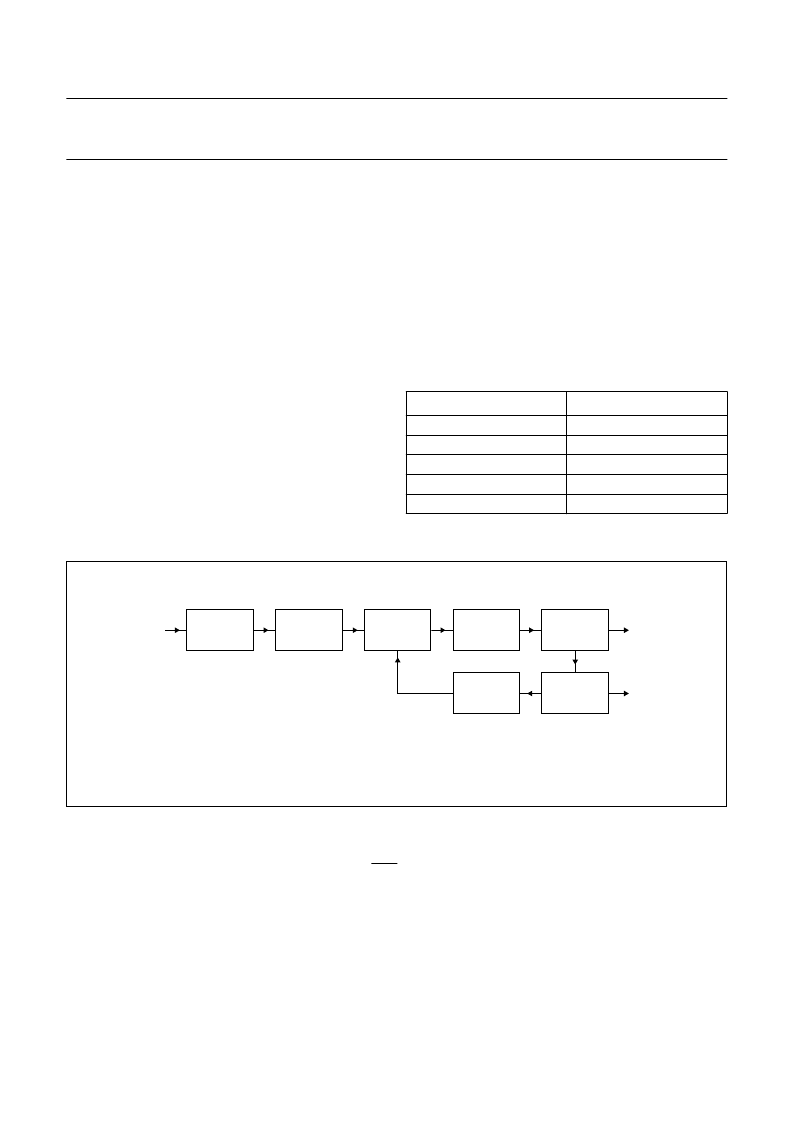- 您現(xiàn)在的位置:買賣IC網(wǎng) > PDF目錄372112 > SAA7108E (NXP SEMICONDUCTORS) PC-CODEC PDF資料下載
參數(shù)資料
| 型號: | SAA7108E |
| 廠商: | NXP SEMICONDUCTORS |
| 元件分類: | 消費家電 |
| 英文描述: | PC-CODEC |
| 中文描述: | SPECIALTY CONSUMER CIRCUIT, PBGA156 |
| 封裝: | 15 X 15 MM, 1.15 MM HEIGHT, PLASTIC, SOT-472-1, BGA-156 |
| 文件頁數(shù): | 62/202頁 |
| 文件大?。?/td> | 983K |
| 代理商: | SAA7108E |
第1頁第2頁第3頁第4頁第5頁第6頁第7頁第8頁第9頁第10頁第11頁第12頁第13頁第14頁第15頁第16頁第17頁第18頁第19頁第20頁第21頁第22頁第23頁第24頁第25頁第26頁第27頁第28頁第29頁第30頁第31頁第32頁第33頁第34頁第35頁第36頁第37頁第38頁第39頁第40頁第41頁第42頁第43頁第44頁第45頁第46頁第47頁第48頁第49頁第50頁第51頁第52頁第53頁第54頁第55頁第56頁第57頁第58頁第59頁第60頁第61頁當前第62頁第63頁第64頁第65頁第66頁第67頁第68頁第69頁第70頁第71頁第72頁第73頁第74頁第75頁第76頁第77頁第78頁第79頁第80頁第81頁第82頁第83頁第84頁第85頁第86頁第87頁第88頁第89頁第90頁第91頁第92頁第93頁第94頁第95頁第96頁第97頁第98頁第99頁第100頁第101頁第102頁第103頁第104頁第105頁第106頁第107頁第108頁第109頁第110頁第111頁第112頁第113頁第114頁第115頁第116頁第117頁第118頁第119頁第120頁第121頁第122頁第123頁第124頁第125頁第126頁第127頁第128頁第129頁第130頁第131頁第132頁第133頁第134頁第135頁第136頁第137頁第138頁第139頁第140頁第141頁第142頁第143頁第144頁第145頁第146頁第147頁第148頁第149頁第150頁第151頁第152頁第153頁第154頁第155頁第156頁第157頁第158頁第159頁第160頁第161頁第162頁第163頁第164頁第165頁第166頁第167頁第168頁第169頁第170頁第171頁第172頁第173頁第174頁第175頁第176頁第177頁第178頁第179頁第180頁第181頁第182頁第183頁第184頁第185頁第186頁第187頁第188頁第189頁第190頁第191頁第192頁第193頁第194頁第195頁第196頁第197頁第198頁第199頁第200頁第201頁第202頁

2004 Mar 16
62
Philips Semiconductors
Product specification
PC-CODEC
SAA7108E; SAA7109E
9.1.4
S
YNCHRONIZATION
The prefiltered luminance signal is fed to the
synchronization stage. Its bandwidth is further reduced to
1 MHz by a low-pass filter. The sync pulses are sliced and
fed to the phase detectors where they are compared with
the sub-divided clock frequency. The resulting output
signal is applied to the loop filter to accumulate all phase
deviations. Internal signals (e.g. HCL and HSY) are
generated in accordance with analog front-end
requirements. The loop filter signal drives an oscillator to
generate the line frequency control signal (LFCO);
see Fig.27.
The detection of ‘pseudo syncs’ as part of the macrovision
copy protection standard is also done within the
synchronization circuit.
The result is reported as flag COPRO within the decoder
status byte at subaddress 1FH.
9.1.5
C
LOCK GENERATION CIRCUIT
The internal CGC generates all clock signals required for
the video input processor.
The internal signal LFCO is a digital-to-analog converted
signal provided by the horizontal PLL. It is a multiple of the
line frequency:
6.75 MHz = 429
×
f
H
(50 Hz), or
6.75 MHz = 432
×
f
H
(60 Hz).
The LFCO signal is multiplied Internally by a factor of
2 and 4 in the PLL circuit (including phase detector, loop
filtering, VCO and frequency divider) to obtain the output
clock signals. The rectangular output clocks have a 50%
duty cycle.
Table 32
Decoder clock frequencies
CLOCK
FREQUENCY (MHz)
XTAL
LLC
LLC2
LLC4 (internal)
LLC8 (virtual)
24.576 or 32.110
27
13.5
6.75
3.375
BAND PASS
FC = LLC/4
ZERO
CROSS
DETECTION
PHASE
DETECTION
LOOP
FILTER
DIVIDER
1/2
DIVIDER
1/2
OSCILLATOR
MHB330
LLC2
LLC
LFCO
Fig.27 Block diagram of the clock generation circuit.
9.1.6
P
OWER
-
ON RESET AND
CE
INPUT
A missing clock, insufficient digital or analog V
DDAd
supply voltages (below 2.7 V) will start the reset sequence; all outputs
are forced to 3-state (see Fig.28). The indicator output RES is LOW for approximately 128 LLC after the internal reset
and can be applied to reset other circuits of the digital TV system.
It is possible to force a reset by pulling the Chip Enable (CE) to ground. After the rising edge of CE and sufficient power
supply voltage, the outputs LLC, LLC2 and SDAd return from 3-state to active, while the other signals have to be
activated via programming.
相關(guān)PDF資料 |
PDF描述 |
|---|---|
| SAA7109E | PC-CODEC |
| SAA7108AE | HD-CODEC |
| SAA7109A | HD-CODEC |
| SAA7109AE | HD-CODEC |
| SAA7110A | Digital Multistandard Colour Decoder(數(shù)字多標準彩色譯碼器) |
相關(guān)代理商/技術(shù)參數(shù) |
參數(shù)描述 |
|---|---|
| SAA7109 | 制造商:PHILIPS 制造商全稱:NXP Semiconductors 功能描述:PC-CODEC |
| SAA7109A | 制造商:PHILIPS 制造商全稱:NXP Semiconductors 功能描述:HD-CODEC |
| SAA7109AE | 制造商:PHILIPS 制造商全稱:NXP Semiconductors 功能描述:HD-CODEC |
| SAA7109AE/V1,518 | 功能描述:視頻 IC HD- VIDEO CODEC RoHS:否 制造商:Fairchild Semiconductor 工作電源電壓:5 V 電源電流:80 mA 最大工作溫度:+ 85 C 封裝 / 箱體:TSSOP-28 封裝:Reel |
| SAA7109AE/V1,557 | 功能描述:視頻 IC HD- VIDEO CODEC RoHS:否 制造商:Fairchild Semiconductor 工作電源電壓:5 V 電源電流:80 mA 最大工作溫度:+ 85 C 封裝 / 箱體:TSSOP-28 封裝:Reel |
發(fā)布緊急采購,3分鐘左右您將得到回復。